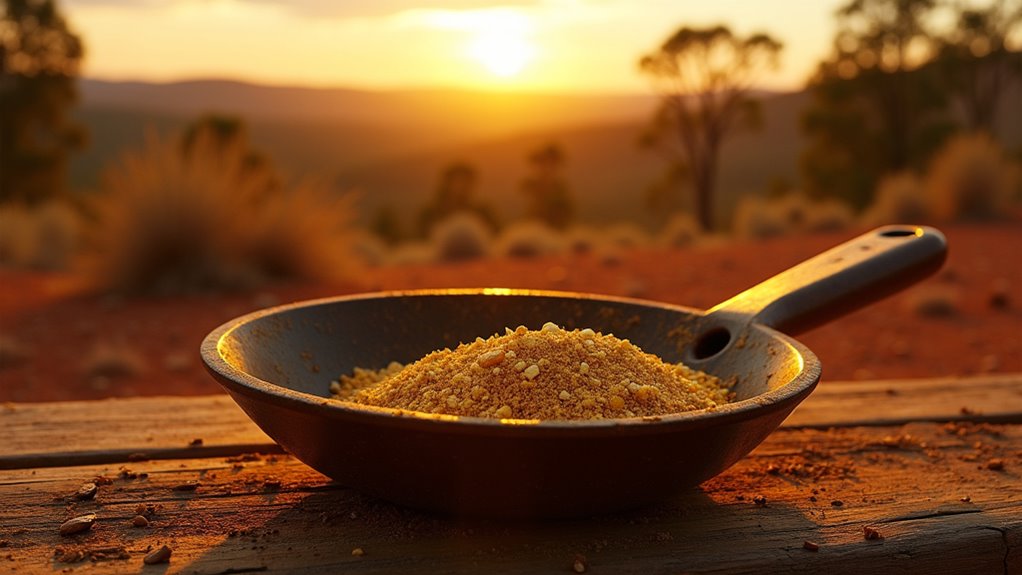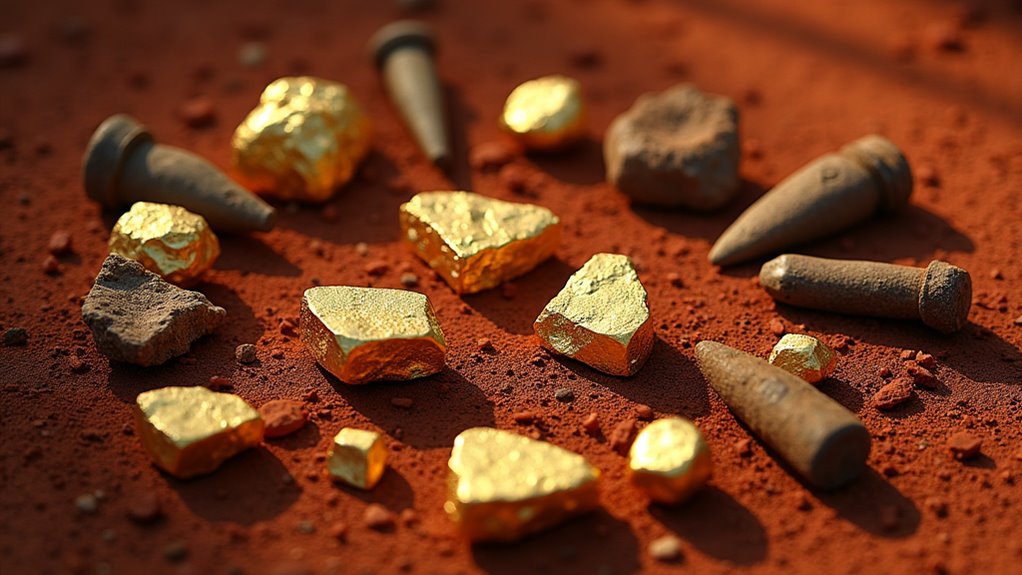South Africa and Australia’s gold mining journeys reflect distinctly different approaches since the 1800s. While South Africa pioneered deep-level mining in the Witwatersrand Basin, often exceeding 3,000 metres, Australia favoured surface-level operations across its vast continental deposits. South Africa’s production peaked in the 1970s but has since declined, while Australia maintains its position as the world’s second-largest producer. These contrasting paths reveal fascinating insights about each nation’s unique geological challanges and innovative solutions.

While gold mining has shaped the economic landscapes of both South Africa and Australia since the 19th century, these two nations have followed distinctly different paths in their pursuit of the precious metal. South Africa’s journey began with the momentous discoveries in the Witwatersrand Basin in 1886, which led to the establishment of Johannesburg and sparked a transformative gold rush. Meanwhile, Australia’s gold story commenced earlier in 1851 with findings at Ophir, New South Wales, igniting the Victorian Gold Rush and forever changing the nation’s trajectory.
The mining approaches between these countries developed along divergent paths due to their unique geological formations. South African operations evolved into deep-level mining, often exceeding depths of 3,000 metres, requiring sophisticated engineering solutions and facing considerable safety challenges. In contrast, Australian mining mainly focused on surface deposits, utilizing large-scale open-pit methods, exemplified by the iconic Super Pit in Western Australia’s goldfields. This open-pit mining technique has enabled Australia to extract gold efficiently while minimizing costs and maximizing mining productivity in their operations. Additionally, Australia’s diverse mining infrastructure supports a robust network for gold extraction and processing. Furthermore, the potential establishment of a gold-backed currency among BRICS nations could influence future gold mining investments.
South Africa’s dominance in global gold production reached its zenith in the 1970s, producing over 1,000 tonnes annually and establishing itself as the world’s largest producer throughout much of the 20th century. However, this supremacy has gradually declined, with the nation now ranking 11th globally. Australia, meanwhile, has maintained a strong and stable production profile, securing its position as the world’s second-largest producer, benefiting from more favorable geological conditions and lower operational costs.
Once the world’s gold mining titan, South Africa’s output has waned while Australia’s steady production keeps it among global leaders.
The economic impact of gold mining continues to reverberate through both nations’ economies, albeit differently. South Africa’s gold sector, while still notable, has been overtaken by other minerals such as platinum and manganese. The industry grapples with escalating production costs, labor disputes, and the inherent challenges of deep-mining operations.
Australian gold mining, conversely, remains robust, contributing substantially to the nation’s mining exports, though facing its own challenges related to environmental sustainability and resource management. Additionally, global gold production is influenced by various factors, including geopolitical events and market demand.
Technological innovation has played a pivotal role in both countries’ mining sectors. South Africa pioneered advanced technologies for deep-mining operations, while Australia has excelled in developing efficient open-pit mining techniques and environmental management practices. Both nations have embraced modern ore processing methods, though their applications differ due to their distinct mining approaches.
Looking ahead, these gold-producing powerhouses face varying challenges. South Africa contends with declining reserves, increasing operational depths, and associated costs, while Australia navigates environmental concerns and land-use conflicts.
Despite these obstacles, both countries continue to contribute notably to global gold production, albeit through different means and with varying degrees of success. The contrast between their approaches highlights how geological circumstances and historical development have shaped two distinct mining legacies in the southern hemisphere.
Frequently Asked Questions
What Environmental Damage Did Historical Gold Mining Cause in Both Countries?
Historical gold mining caused severe environmental damage in both South Africa and Australia.
In South Africa, acid mine drainage contaminated water sources, while massive tailings dumps created persistent air pollution and soil degradation.
Australia faced widespread deforestation and mercury contamination in waterways.
Both countries experienced significant ecosystem disruption, with toxic substances affecting wildlife, vegetation, and water quality.
These impacts continue to pose environmental challenges today.
How Did Indigenous Populations Participate in Early Gold Mining Activities?
Indigenous populations in both regions had distinctly different experiences with early gold mining.
South African communities, particularly the Manyika people, conducted sophisticated pre-colonial mining operations using traditional tools and smelting techniques, primarily for trade.
In contrast, Aboriginal Australians’ involvement was more limited, though they occasionally partnered with European miners, lending their valuable knowledge of the land to help locate promising deposits.
Both groups faced systemic exploitation and displacement as colonial mining expanded.
Which Mining Companies Dominated the Gold Industry in Each Country?
In South Africa, AngloGold Ashanti and Sibanye-Stillwater emerged as dominant forces, while early pioneers like Cecil Rhodes’s Consolidated Goldfields shaped the industry’s foundation.
Historic Randlords wielded significant influence in the sector’s development.
Meanwhile, Australia’s landscape was dominated by Newcrest Mining, which became the country’s largest producer, alongside Northern Star Resources and Evolution Mining, who’ve grown through strategic acquisitions and operational excellence.
What Safety Regulations Existed for Miners During the Gold Rush Periods?
During the gold rush periods, safety regulations were virtually non-existent. Miners faced significant hazards with minimal protections in place.
Australia’s early mining camps relied heavily on individual discretion rather than government mandates, while South African mines operated with rudimentary health inspection protocols that were rarely enforced.
The introduction of the 1872 Metalliferous Mines Regulation Act in Britain eventually influenced Australian mining laws, though meaningful safety legislation didn’t emerge until decades later.
How Did Gold Mining Influence Immigration Patterns in South Africa and Australia?
Gold mining greatly shaped immigration patterns in both nations.
While Australia’s gold rush attracted diverse international migrants, particularly Chinese prospectors and European settlers seeking fortune, South Africa developed a more structured labour system.
South African mines relied heavily on domestic migrants from rural areas and workers from neighbouring countries like Mozambique and Lesotho.
This created lasting socio-economic impacts, with mining compounds and remittance-dependent communities becoming characteristic features of South Africa’s mining regions.













